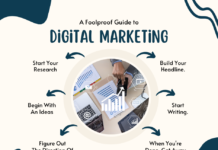How to Make Money Through the Dropshipping Model
The dropshipping business model has gained massive popularity over the past decade due to its low startup costs and ease of access. Unlike traditional retail, dropshipping allows you to run an online store without ever handling the physical products. You simply partner with suppliers who ship products directly to your customers. This model can be extremely profitable when executed correctly.
In this blog, we’ll explore how to start and scale a profitable dropshipping business, and the key steps involved in making real money from it.
What is Dropshipping?
Dropshipping is a retail fulfillment method where a store doesn’t keep the products it sells in stock. Instead, when you sell a product, you purchase it from a third-party supplier who ships it directly to the customer. You, as the seller, don’t have to deal with inventory, packaging, or shipping.
This makes it a highly attractive model for new entrepreneurs looking to start an online business with minimal risk and investment.
Why Dropshipping is a Great Way to Make Money
-
Low Startup Costs: No need to invest in inventory upfront.
-
Easy to Start: With platforms like Shopify, you can launch a store in a day.
-
Scalability: You can test multiple products and scale quickly based on demand.
-
Location Independence: Run your business from anywhere with an internet connection.
However, while dropshipping is simple in concept, it requires smart strategy, effort, and persistence to be truly profitable.
1. Choose the Right Niche
Your niche is the foundation of your store. Choosing the right one is crucial for success.
Tips to Select a Profitable Niche:
-
Solve a Problem: Products that solve everyday problems often sell well.
-
Target Passionate Buyers: People spend more in niches they are passionate about (e.g., fitness, pets, gaming).
-
Check Demand: Use tools like Google Trends, TikTok, or Amazon Best Sellers to see what’s trending.
-
Avoid Saturated Products: Skip items that everyone is selling unless you can add a unique angle.
Examples of profitable niches: Eco-friendly products, pet accessories, home improvement tools, skincare gadgets, fitness gear, and tech accessories.
2. Find Reliable Suppliers
Your supplier will determine the quality of your product and shipping time. Partnering with a poor supplier can hurt your reputation quickly.
Where to Find Suppliers:
-
AliExpress: Popular for beginners due to easy integration with Shopify.
-
Spocket: Offers faster shipping times, especially for US and EU.
-
CJ Dropshipping: A good alternative with branding and private labeling options.
-
Printful/Printify: For custom apparel and print-on-demand products.
Tips:
-
Order sample products to test quality.
-
Check supplier ratings, reviews, and communication.
-
Choose suppliers with fast and trackable shipping options.
3. Build a Professional E-commerce Store
Your website is your storefront. It must look trustworthy and easy to use to convert visitors into buyers.
Key Elements of a High-Converting Store:
-
Clean Design: Use a modern, clutter-free design with a clear layout.
-
Fast Loading Speed: Optimize images and choose a fast theme.
-
Mobile Optimization: Over 70% of buyers shop via mobile devices.
-
Trust Signals: Include customer reviews, secure payment badges, and a refund policy.
-
Clear Product Descriptions: Highlight benefits, features, and uses. Use persuasive copy and call-to-action buttons.
Platforms like Shopify and WooCommerce offer templates and plugins to make this easy even for beginners.
4. Set Competitive Prices
Pricing plays a critical role in dropshipping. You need to ensure you’re making a profit while staying competitive.
How to Price Your Products:
-
Calculate product cost + shipping + transaction fees.
-
Add a markup (commonly 2x to 3x the product cost).
-
Factor in your advertising spend.
Pro Tip: Don’t compete solely on price—offer better customer service, branding, or faster shipping to justify your pricing.
5. Market Your Store Effectively
Without marketing, your store won’t make sales. Marketing is the engine that drives traffic and conversions.
Top Dropshipping Marketing Strategies:
a) Paid Advertising
-
Facebook & Instagram Ads: Great for visual products. Start with broad testing, then scale winning ads.
-
Google Shopping Ads: High-converting for products with clear buyer intent.
-
TikTok Ads: Ideal for trending or viral products with short-form video appeal.
b) Influencer Marketing
-
Partner with niche influencers to promote your products.
-
Micro-influencers can offer better ROI and engagement.
c) Content Marketing & SEO
-
Start a blog around your niche.
-
Optimize product pages for keywords.
-
Rank organically over time for long-term traffic.
d) Email Marketing
-
Build an email list with lead magnets or pop-ups.
-
Send follow-up sequences, cart abandonment emails, and newsletters.
The key is testing and doubling down on what works.
6. Provide Great Customer Service
Customer support can make or break your dropshipping business. Since you’re not handling the shipping yourself, communication is key.
Best Practices:
-
Set clear expectations for shipping times on your website.
-
Respond quickly to inquiries and complaints.
-
Have a solid refund and return policy.
-
Use chatbots or helpdesk tools like Zendesk or Tidio.
Happy customers bring repeat business and refer others.
7. Optimize and Scale
Once you find products that are selling well, focus on scaling.
How to Scale Your Dropshipping Store:
-
Increase ad spend gradually on profitable campaigns.
-
Introduce upsells and cross-sells.
-
Build a brand around your best-selling product.
-
Explore private labeling or bulk buying for better margins.
Track your data continuously—conversion rate, cost per acquisition (CPA), return on ad spend (ROAS), and customer lifetime value (LTV). Optimize based on performance.
8. Common Mistakes to Avoid
-
Selling low-quality products that result in refunds and complaints.
-
Ignoring customer service, which damages your brand.
-
Not testing enough products or ads before scaling.
-
Overcomplicating the store with too many products.
-
Relying on one marketing channel—diversify traffic sources.
Conclusion
Dropshipping offers a low-risk path to start an online business, but it’s not a shortcut to easy money. It requires dedication, research, and continuous learning. From selecting the right niche to finding trusted suppliers and mastering digital marketing, each step plays a role in your success.
If you stay consistent, track results, and prioritize customer satisfaction, dropshipping can become a highly profitable and scalable venture.
Start small, think big, and grow smart. Your dropshipping journey begins with the first step—start today.






